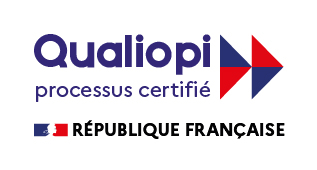1. Define the objective and requirements for automating contractual processes
This is obviously the most important phase. It will define the framework of your project. What are your company's current contractual needs? What is the objective of your project? Some examples include:
- Centralizing contract data
- Standardizing contract processes
- Developing and mastering legal security
You can also ask yourself what the expected benefits are:
- Saves time for operational teams during drafting
- Reduced time spent by legal teams checking contracts
- Greater autonomy for non-lawyer operational staff
- Increased responsiveness of your services
- Reduce dispute processing time
Once your automation project has been defined, an audit of your company's existing contractual processes is essential.
2. Audit your company's contractual processes
The aim of this stage is to meet your employees and review with them, department by department, the contracts they use regularly and repeatedly.
Whether it's the Sales department with service or product contracts, the HR department with employment contracts and amendments, the Finance department with service provider or supplier contracts, or the Management or Key Accounts departments that manage partnerships with other companies, etc., contracts are really at the heart of the matter in your company.
This overview will give you a complete list of the contracts we use.
The aim here is to identify "repetitive" contracts. These are contracts that meet a specific use case and change little. For example, a subscription contract for one of your services.
When you list them, don't forget to analyze the process of each contract:
- Which department draws up the contract?
- Which manager or department validates the contract before signing?
- Who signs the contract internally: a manager, the director, the head of department?
- Who signs the contract externally: a customer, a service provider, a supplier, a partner?
- How is the contract transmitted to the external party?
- How are signed originals sent to all parties?
- How are signed contracts stored?
You also want to improve what already exists. Now is the time to ask yourself what proof you want to keep for each stage, especially proof that the contract has been signed and sent. In the event of a dispute, having anticipated this question can prove highly beneficial.
3. Prioritize contractual processes to be automated
Contracts are listed, processes analyzed and improvements identified. You can now prioritize the contractual processes you wish to automate.
To do this, you can ask yourself the question of immediate benefit. Although the importance of automating contracts is the same whatever the purpose, for this stage we'll be thinking in terms of short-, medium- and long-term benefits.
For example, automating a contract used daily by the Sales department will be more beneficial in the short term than automating the process for an HR contract.
4. Find your service provider to automate your repetitive contractual processes
You can now look for the best service provider to support you in your contract automation project.
Here again, several questions will guide your reflection:
- Does this provider offer features to meet all your needs? ?
- Does the proposed solution comply with current legislation, in particular eiDAS and RGPD?
- What is the the quality of the support offered ? Will you have a dedicated contact person? Does the service provider have sufficient legal resources in-house? Do you plan to train your staff?
- What developments do they propose for the short, medium and long term?
- Does the supplier have its own R&D team to ensure application enhancements?
This stage may seem fairly straightforward, but in reality it's essential, and involves regular discussions with your service provider. Take the time to talk things over before making your decision.
5. Test contract automation
Once you've selected your service provider, you can begin deployment and automate your contractual processes.
The best thing to do at this stage is to think things through. We recommend that you test the automation of an initial contract. This will enable you to validate several new features with the operational team:
- The contractual process
- The application
- The contract generated
Then, once you've got the hang of it, you can roll out the new automated contracts on a department-by-department basis.
But the project doesn't stop there! In fact, change management involves the human factor. Training your teams and communicating with them on a regular basis will ensure that the digital transition is well perceived and that your operational staff feel supported.
MyLegiTech is a new-generation LegalTech. For us, there can be no digital transition without people. That's why our our solution is based on 4 major pillars :
- The application: the heart of your automated contracting process
- Hardware: completes the user experience and enhances the security of your contracts
- People: the key to your project's success, and at the heart of our support.
- Legal: our team of legal experts guarantees the compliance of our solution


